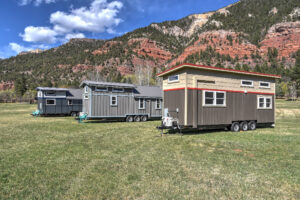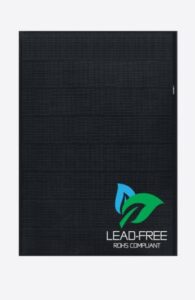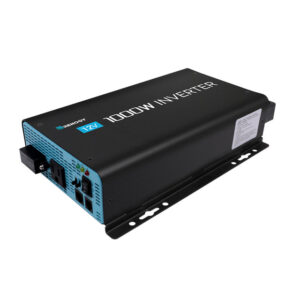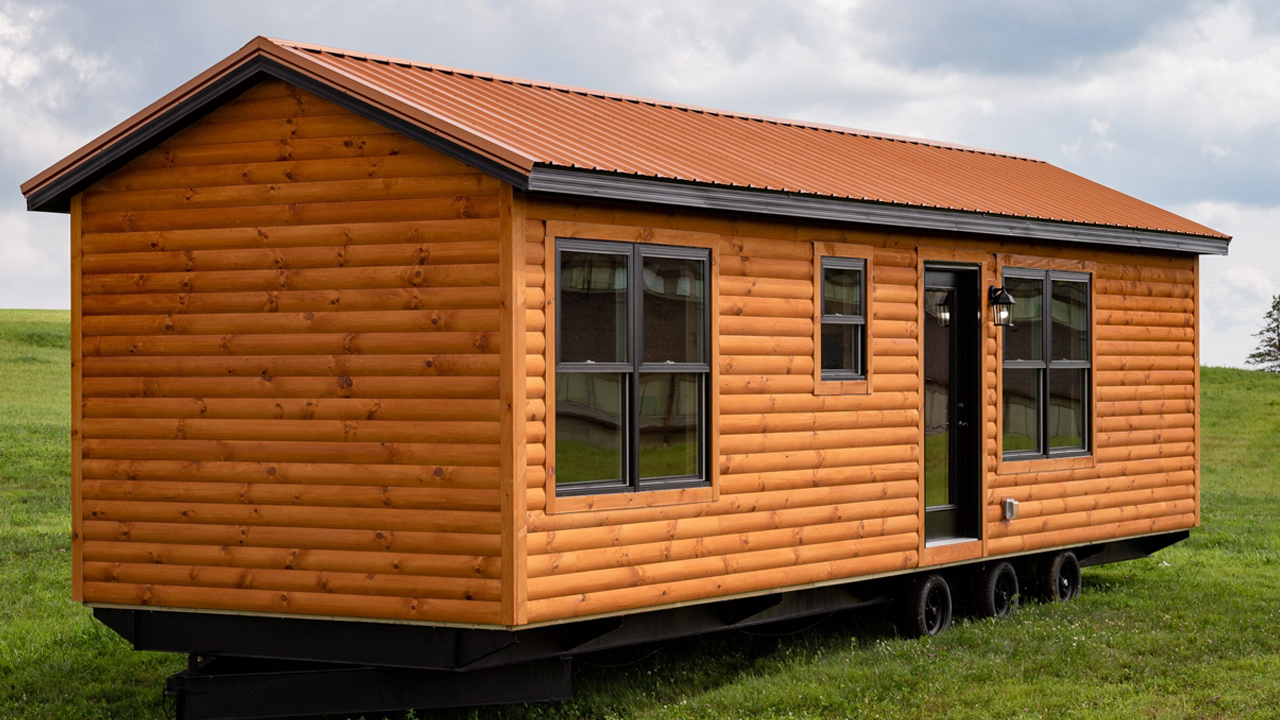
Key Takeaways
-
The Firefly model from Great Lakes Tiny Homes offers a spacious two-bedroom layout within a tiny home footprint.
-
Maximizing square footage in tiny homes involves smart furniture selection, clever storage solutions, and thoughtful layout planning.
-
Cost-effectiveness and a smaller ecological footprint are significant benefits of tiny home living.
-
Choosing the right location for your tiny home involves considering zoning laws and the desired lifestyle.
-
Personal stories from Firefly owners highlight the satisfaction of living in a well-designed compact space.
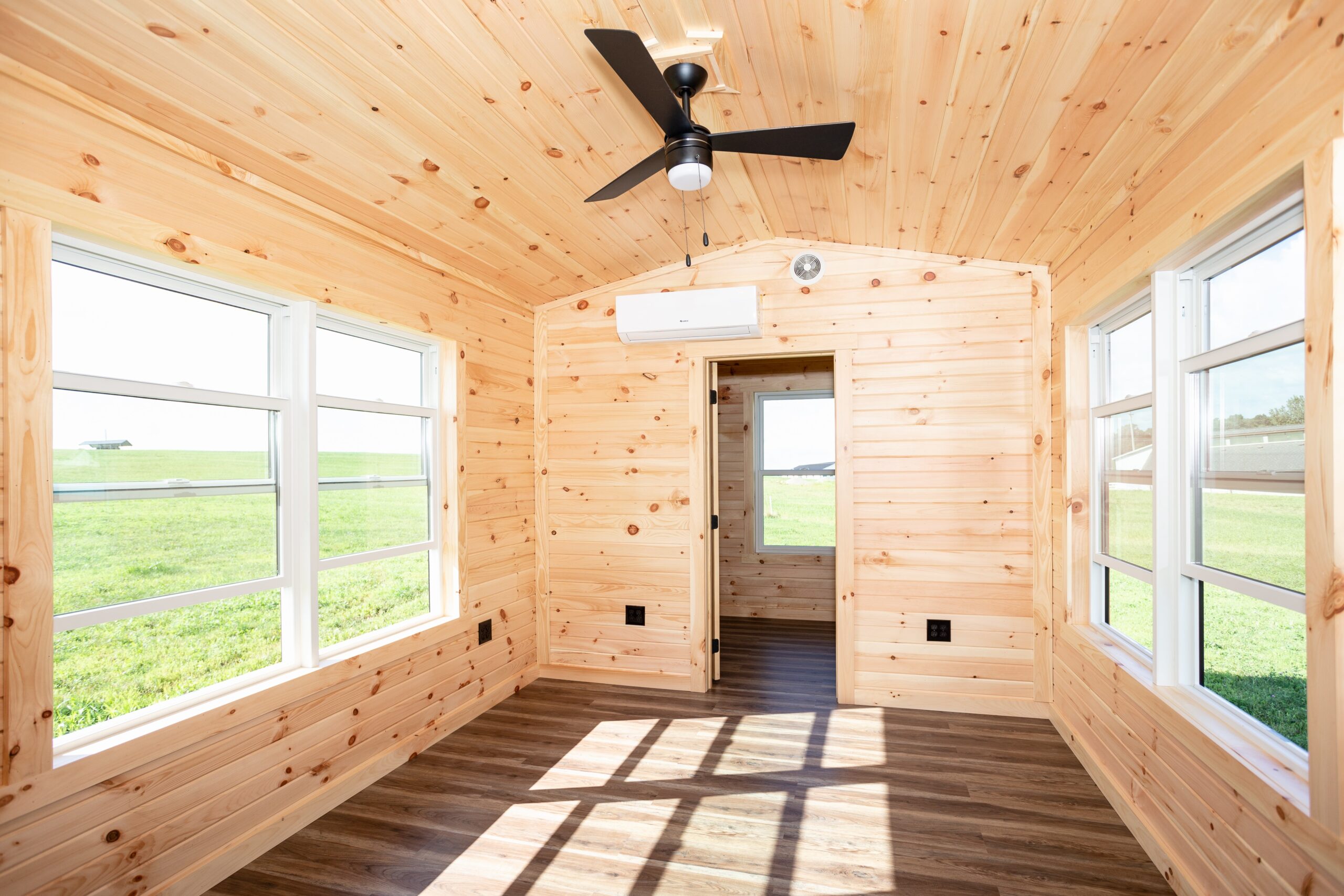
Decoding the Firefly: A Spacious Two-Bedroom Design
Imagine a home that encapsulates both the rustic charm of a cabin and the innovative design of modern living. The Firefly tiny home, crafted by Great Lakes Tiny Homes, is a marvel of compact living, offering a two-bedroom floor plan that feels both cozy and spacious. It’s a testament to the fact that downsizing your living space doesn’t mean you have to downsize your life.
The Firefly’s interior is a blend of traditional aesthetics with contemporary space-saving features. It’s finished with log siding, a metal roof, and tongue & groove pine for that classic cabin vibe. But don’t let the traditional look fool you; inside, this tiny home is equipped with modern amenities and clever design elements to make the most of every inch.
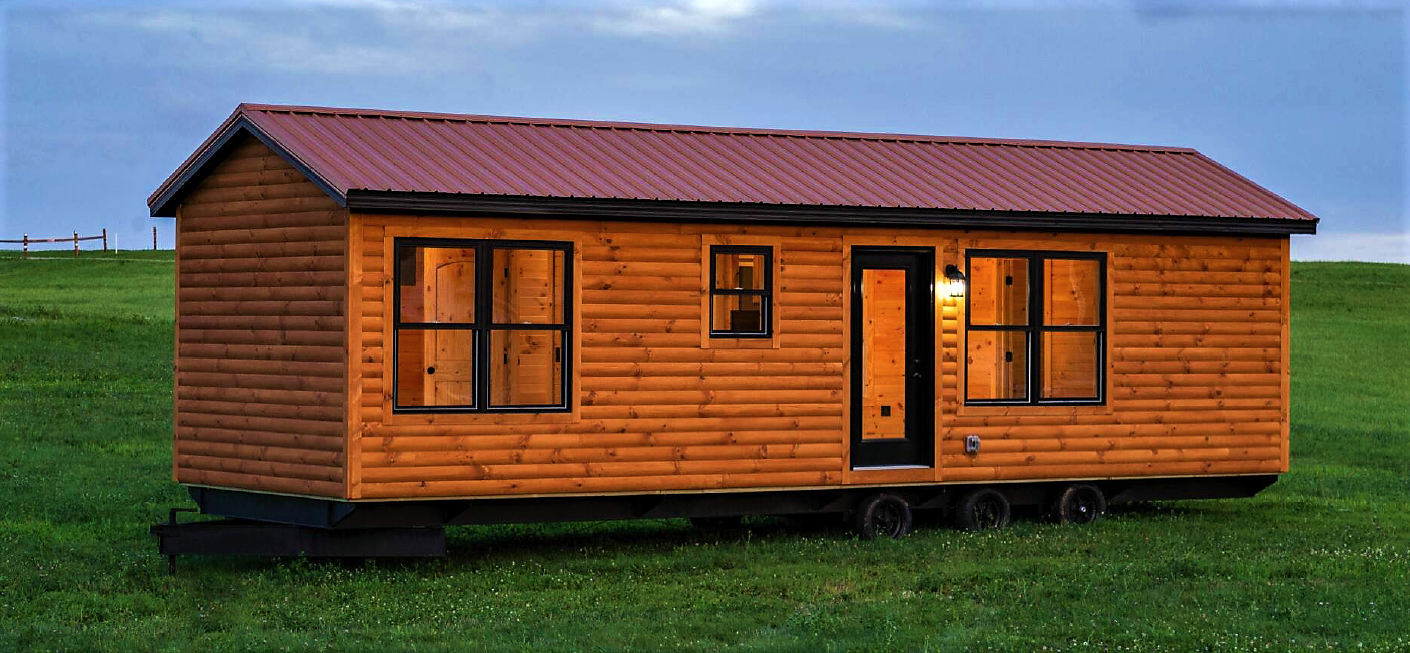
Living Large in a Small Space: Maximizing Square Footage
So, how do you live large in a tiny home? The secret is in the smart use of space. In the Firefly, every square foot is meticulously planned. High ceilings and large windows not only bring in natural light but also create the illusion of a larger space. The open floor plan connects the living area, kitchen, and dining space, making it perfect for entertaining or just a cozy night in.
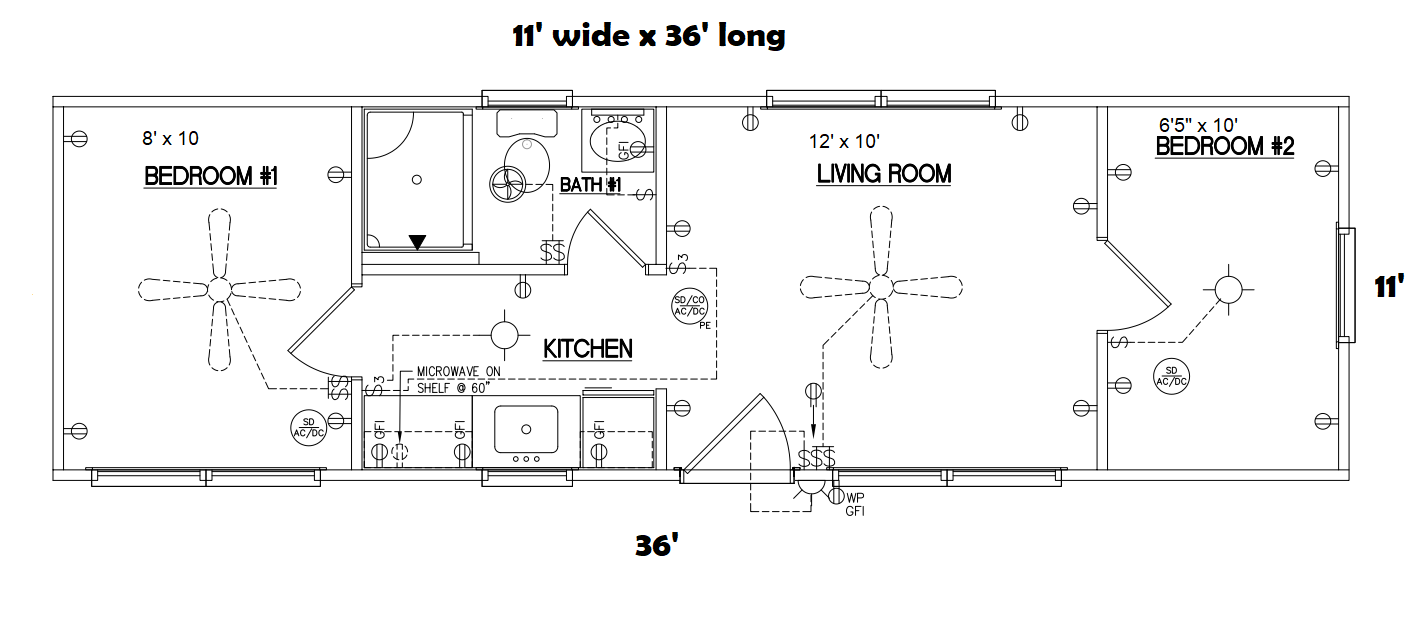
Blueprint of Comfort: Firefly Great Lakes Floor Plan Explored
The Firefly model embraces a traditional-style layout, which is both functional and inviting. Let’s walk through the floor plan:
-
Living Area: Situated at the heart of the home, the living area is designed for relaxation and socializing.
-
Kitchen: A fully-equipped kitchen with modern appliances and clever storage makes cooking a breeze.
-
Bathroom: A full bathroom with all the necessary amenities ensures comfort and convenience.
-
Bedrooms: Two bedrooms provide private, cozy spaces for rest, with built-in storage to keep things tidy.
Most importantly, the Firefly model shows that a well-thought-out floor plan can make a world of difference in a tiny home. By clearly defining each area, the home avoids the cramped feeling that can come with smaller spaces.
The Layout: From Cozy Bedrooms to Functional Spaces
The layout of the Firefly is a game-changer for those considering tiny home living. The master bedroom is large enough to fit a queen-sized bed, while the second bedroom can serve as a guest room or an office. Sliding doors and pocket doors are used throughout to save space and enhance privacy.
The bathroom is a compact yet complete setup with a full-sized shower, sink, and composting toilet. The choice of a composting toilet is not only space-saving but also eco-friendly, aligning with the sustainable ethos of tiny home living.
The kitchen, often the heart of a home, doesn’t skimp on functionality. It includes a full-sized refrigerator, a range, and plenty of counter space. Overhead and under-counter cabinets provide ample storage, ensuring that countertops remain clutter-free.
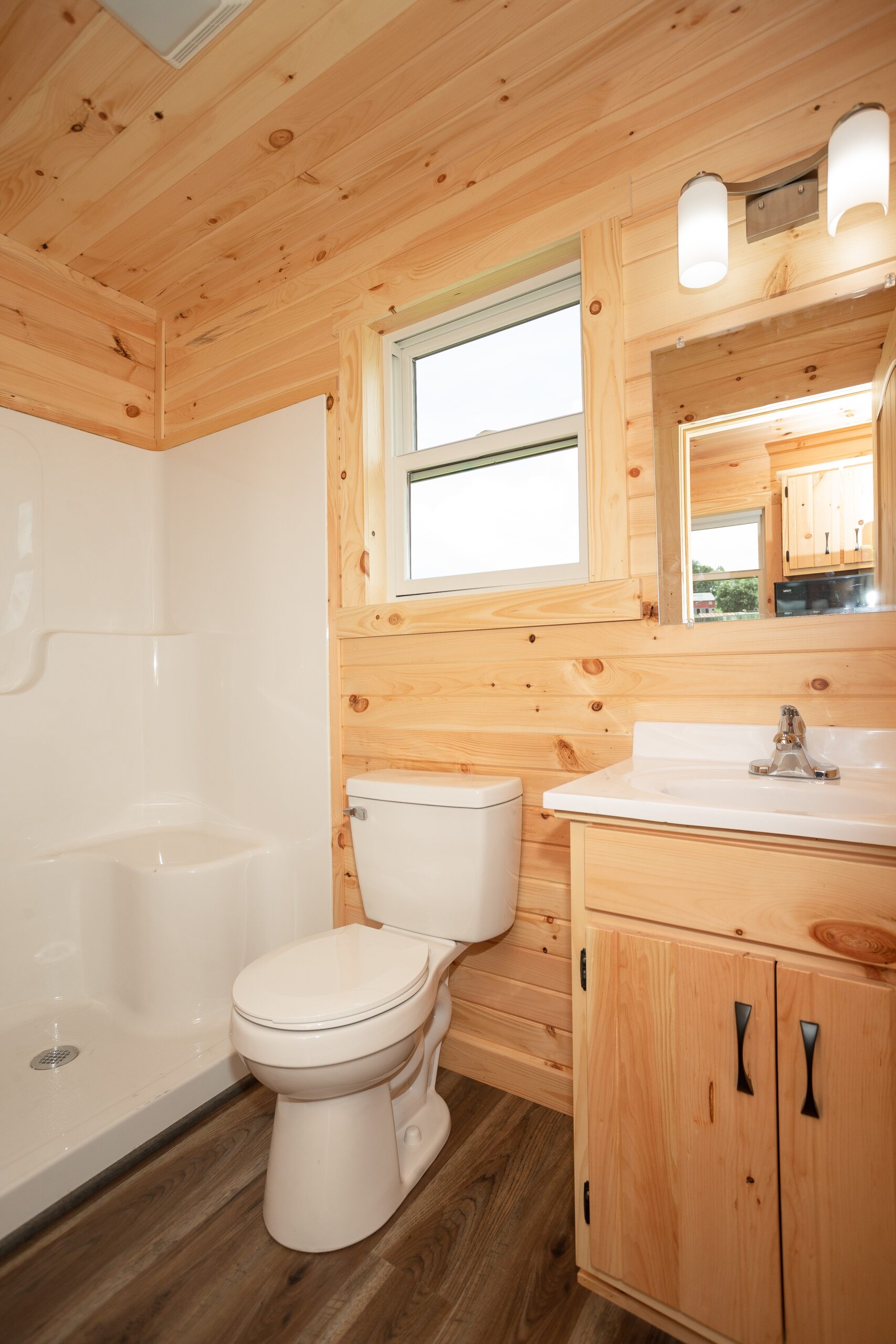
Detailed Design: Interior Features and Amenities
Now, let’s dive into the details that make the Firefly not just a house, but a home. The interior is finished with warm wood tones that create a cozy atmosphere. Energy-efficient LED lighting is used throughout, reducing the home’s energy footprint and utility costs.
Insulation is key in a tiny home, and the Firefly is well-insulated against both cold and heat, ensuring year-round comfort. High-quality materials are used throughout, from the hardwood floors to the solid surface countertops, reflecting the model’s commitment to durability and style.
Clever Storage Solutions: Keeping Clutter at Bay
One of the keys to thriving in a tiny home is keeping clutter under control. The Firefly excels in offering inventive storage solutions. Under the stairs, you’ll find built-in drawers and shelves, perfect for stowing away shoes or seasonal items. The kitchen boasts a pantry with pull-out shelves, making it easy to access everything you need. Overhead lofts are not just for sleeping; they also provide extra storage for items not used daily.
Ingenious Layout Tweaks: Enhancing Flow and Functionality
To enhance the flow and functionality of the Firefly, every corner is thoughtfully utilized. For instance, a fold-down table in the living area serves as a dining space, a desk, or an extra prep area for the kitchen. Built-in benches not only provide seating but also open up to reveal hidden storage. These tweaks allow you to adapt the space to your needs without compromising on comfort or style.
Moreover, the strategic placement of windows and skylights in the Firefly not only brings in ample natural light but also helps in creating an airy feel. These design choices contribute to a home that feels open and connected to the outdoors, a crucial aspect of tiny home living.
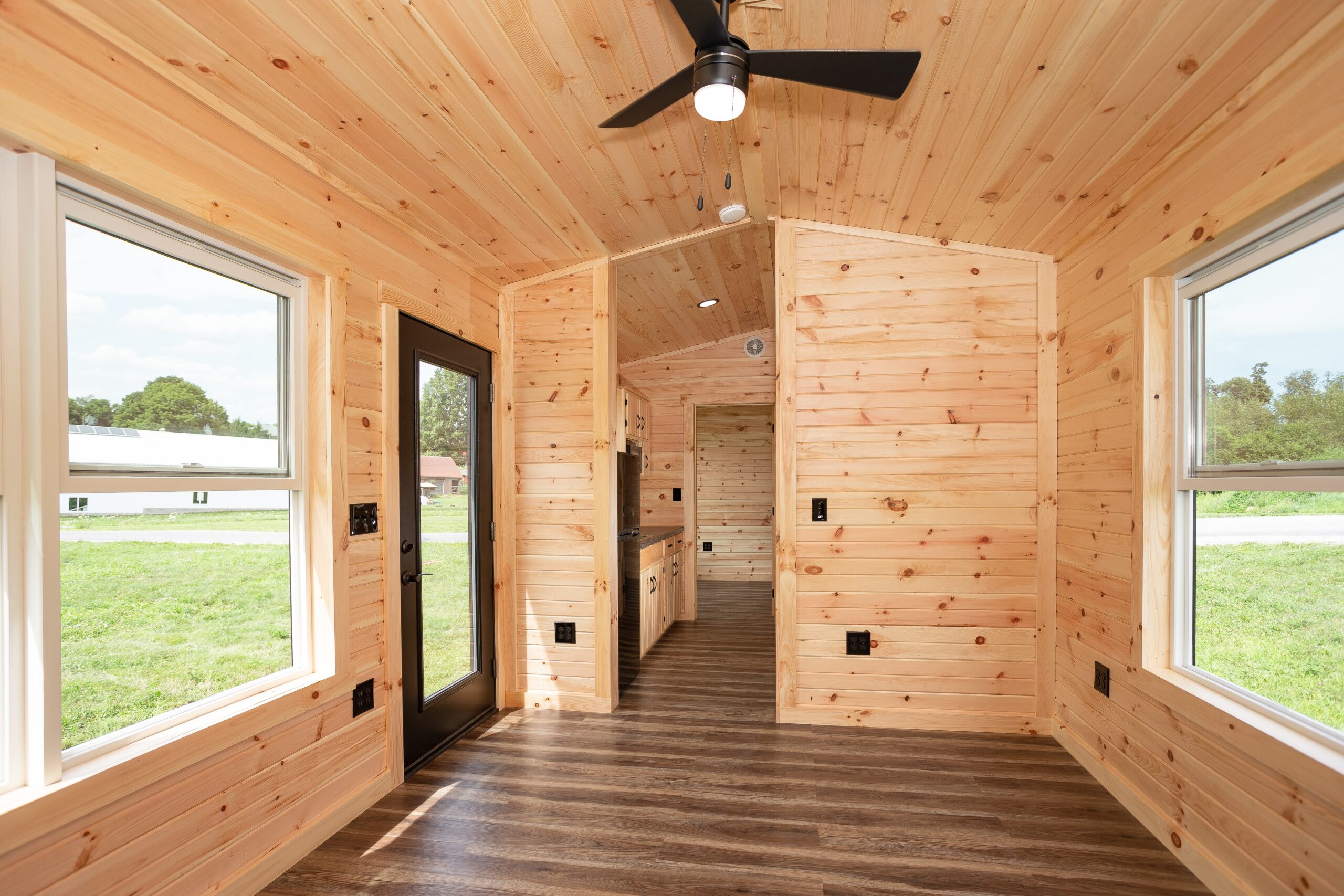
Embracing Tiny Home Living: Transformative Benefits
Embracing tiny home living is about more than just a smaller space; it’s about a lifestyle change that comes with transformative benefits. The Firefly model is a prime example of how compact living can lead to a more sustainable and intentional way of life.
Living in a tiny home like the Firefly encourages you to declutter not just your physical space but also your life. It’s an opportunity to focus on what truly matters, fostering a sense of freedom and simplicity that’s hard to find in a larger home.
Cost-Effectiveness and Eco-Friendly Choices
The financial savings with tiny homes are substantial. The Firefly, with its efficient use of space and materials, costs significantly less than a traditional home. Utility bills are lower due to the smaller space and the use of energy-efficient appliances. Besides that, the choice of a composting toilet and LED lighting reflects an eco-friendly approach that reduces your carbon footprint.
Community and Lifestyle: The Intangible Rewards
Beyond the tangible benefits, tiny home communities often foster a sense of camaraderie and shared values. Living in the Firefly, you’re likely to be surrounded by like-minded individuals who value sustainability, minimalism, and a close-knit community feel. These intangible rewards can lead to a richer and more fulfilling lifestyle.

Selecting the Perfect Spot: Siting Your Tiny Home
Where you place your tiny home is as important as the home itself. The beauty of the Firefly model is that its design suits a variety of settings, from a lakeside retreat to a mountain getaway. But before you settle on the perfect spot, consider the efficiency of solar panels for your tiny home among other factors.
Scouting for Serenity: The Search for an Ideal Location
When searching for the ideal location for your Firefly home, think about what brings you peace. Do you long for the quiet of the countryside or the buzz of a tiny home community? Consider access to nature, local amenities, and the type of environment where you’ll thrive.
-
Proximity to nature for outdoor activities
-
Access to essential services and amenities
-
Community atmosphere and neighborly relations
-
Views and aesthetics of the surroundings
-
Overall cost of living in the area
Remember, the location of your tiny home can greatly influence your daily life and well-being, so take your time to find a place that resonates with you. For more insights on optimizing your living space, check out these tiny home living tips.
Navigating Zoning and Regulations: What You Need to Know
Before you get too attached to a spot, it’s crucial to understand the zoning laws and building regulations of the area. These rules can vary widely from one municipality to another, and they can dictate the size, placement, and even the type of tiny home you can have.
For example, some areas may require your tiny home to be on a foundation, while others allow for homes on wheels. It’s important to do your research or consult with local authorities to avoid any legal headaches down the road.
Understanding these regulations early on can save you from future surprises and ensure that your tiny home dream doesn’t hit any unnecessary snags.
Real Life Adventures: Stories from Happy Tiny Home Dwellers
Meet Emma and Jack, a young couple who traded their two-story house for the Firefly tiny home. They share tales of reduced living expenses, a lower carbon footprint, and the joy of living in a space that demands creativity and closeness. Their story is just one of many that showcase the satisfaction of tiny home living.
The Verdict: Living Full-Time in a Firefly Great Lakes Home
For those who’ve made the leap, like Emma and Jack, the verdict is clear: living full-time in a Firefly Great Lakes home is not only feasible, it’s transformative. The well-designed space, the sense of community, and the freedom from excess possessions contribute to a fulfilling lifestyle shift that many never want to reverse.
Owners of the Firefly model often speak of the peace that comes with owning less and the time they reclaim for hobbies, relationships, and personal growth. This tiny home isn’t just a place to live; it’s a launchpad for a life focused on what truly matters.
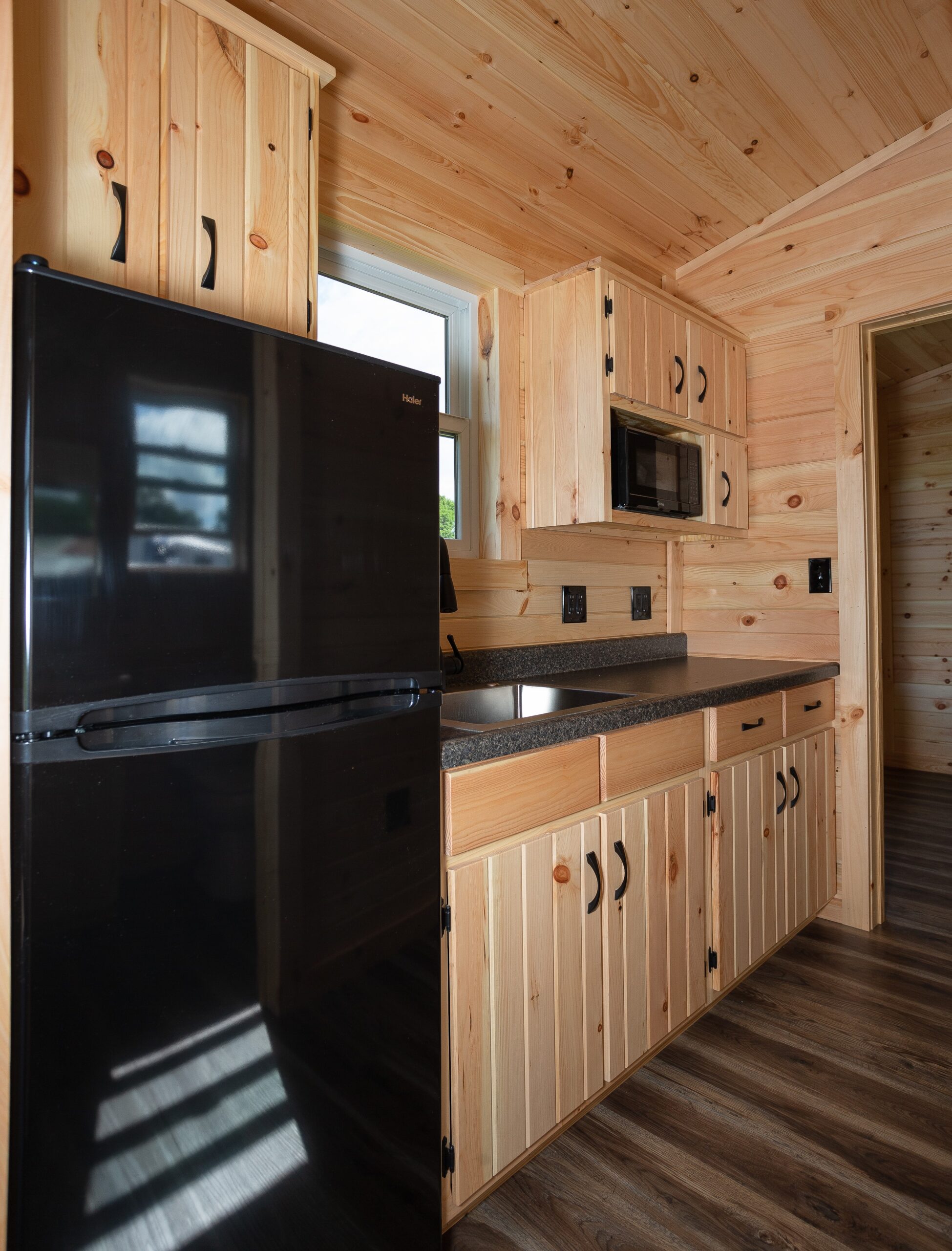
Frequently Asked Questions (FAQ)
Let’s address some common queries about the Firefly Great Lakes model and tiny home living in general.
How Does the Firefly Great Lakes Model Manage Waste and Water?
The Firefly model is equipped with a composting toilet, which is an eco-friendly solution that reduces water usage. For greywater, which comes from sinks and showers, the system is designed to be connected to a sewage or septic system, depending on your location. Rainwater collection systems are also a popular addition for environmentally-conscious owners.
What Are the Long-Term Costs of Maintaining a Firefly Tiny Home?
Long-term maintenance costs for a Firefly tiny home are generally lower than those for a traditional home. The compact size means less wear and tear, and the high-quality materials used in construction ensure durability. You can expect to spend on routine maintenance such as exterior staining and interior touch-ups, similar to any home, but at a smaller scale.
Additionally, energy costs are lower due to the smaller space and efficient appliances. It’s important to budget for any off-grid systems you may use, such as solar panels or composting toilets, which have their own maintenance schedules.
Can the Firefly Model Accommodate a Family of Four Comfortably?
While the Firefly model is spacious for a tiny home, living comfortably with a family of four requires a commitment to organization and minimalism. The two bedrooms can be configured to sleep multiple people, and the communal areas are designed for multi-use. Families who thrive in a Firefly home often speak of closer bonds and a more engaged lifestyle.
It’s all about clever use of space and ensuring that every family member is on board with the tiny home philosophy. With the right mindset, a family can not only live in a Firefly home but truly enjoy the experience.
What Are the Customization Options Available for the Firefly?
Great Lakes Tiny Homes offers various customization options for the Firefly model to suit different needs and tastes. You can choose different finishes, add additional storage solutions, or even alter the layout to better fit your lifestyle. The company works with you to ensure your tiny home feels uniquely yours.
Some popular customizations include adding solar panels for off-grid living, custom-built furniture that doubles as storage, and tailored exterior designs that reflect the owners’ personalities.
Is Financing Available for a Firefly Great Lakes Tiny Home?
Yes, financing options are available for those interested in purchasing a Firefly tiny home. While tiny homes often don’t qualify for traditional mortgages, specialized lenders offer loans designed for tiny homes. It’s also worth exploring personal loans, and in some cases, manufacturers like Great Lakes Tiny Homes may offer direct financing or rent-to-own schemes.
For those interested in the tiny home lifestyle, the Firefly Great Lakes floor plan offers a compact living solution without sacrificing comfort. This two-bedroom tiny home includes smart space optimization tips that make the most of its limited square footage, ensuring that you can enjoy a cozy, organized, and functional home.

